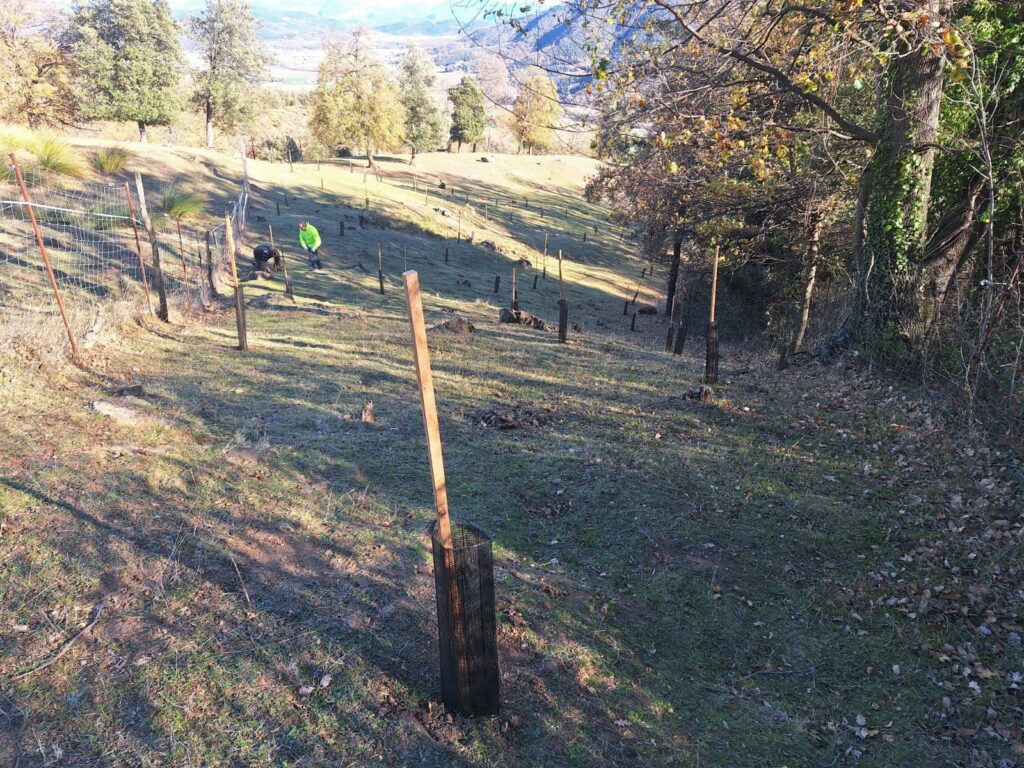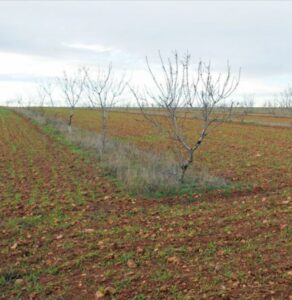The CTFC carries out the planting of forage shrub plants in Mediterranean open woodlands.
Before the end of 2023, the CTFC has planted 340 shrubs and trees in Mediterranean "dehesa, i.e. open woodland", specifically in cork oak dehesa in Agullana and oak dehesa in Sant Esteve d'en bas (Girona).
The mock privet (Phillyrea latifolia), the barren privet (Rhamnus alaternus) and the cherry (Prunus avium) have been the protagonists of this action. They were chosen for their Mediterranean origin, which gives them the ability to adapt to the climate condicions, and also, for their grazing nature. At this moment, they are rooting and preparing to grow this spring. To prevent the herd from eating them before their time, we have installed plant protection systems.


From the ecology and silvopastoral systems group of CTFC, we have designed the plantations with the objective of enriching the ecosystem and providing the herds with a food alternative in situations of drought and low pasture production. Some plants have been placed as they would be found naturally, scattered throughout the dehesa. Others, have been planted grouped and fenced, creating a woody bank from which the herd can be fed when the shepherd decides so.
In both farms we have verified how much cattle contributes to the maintenance of the dehesa. The cows and sheep maintain these productive systems, which also reduce vulnerability to fires and promote diversity in the landscape. Thanks to LIFE AgroForAdapt, these silvopastoral systems have been strengthened and we hope that they will be more resilient to climate change.


